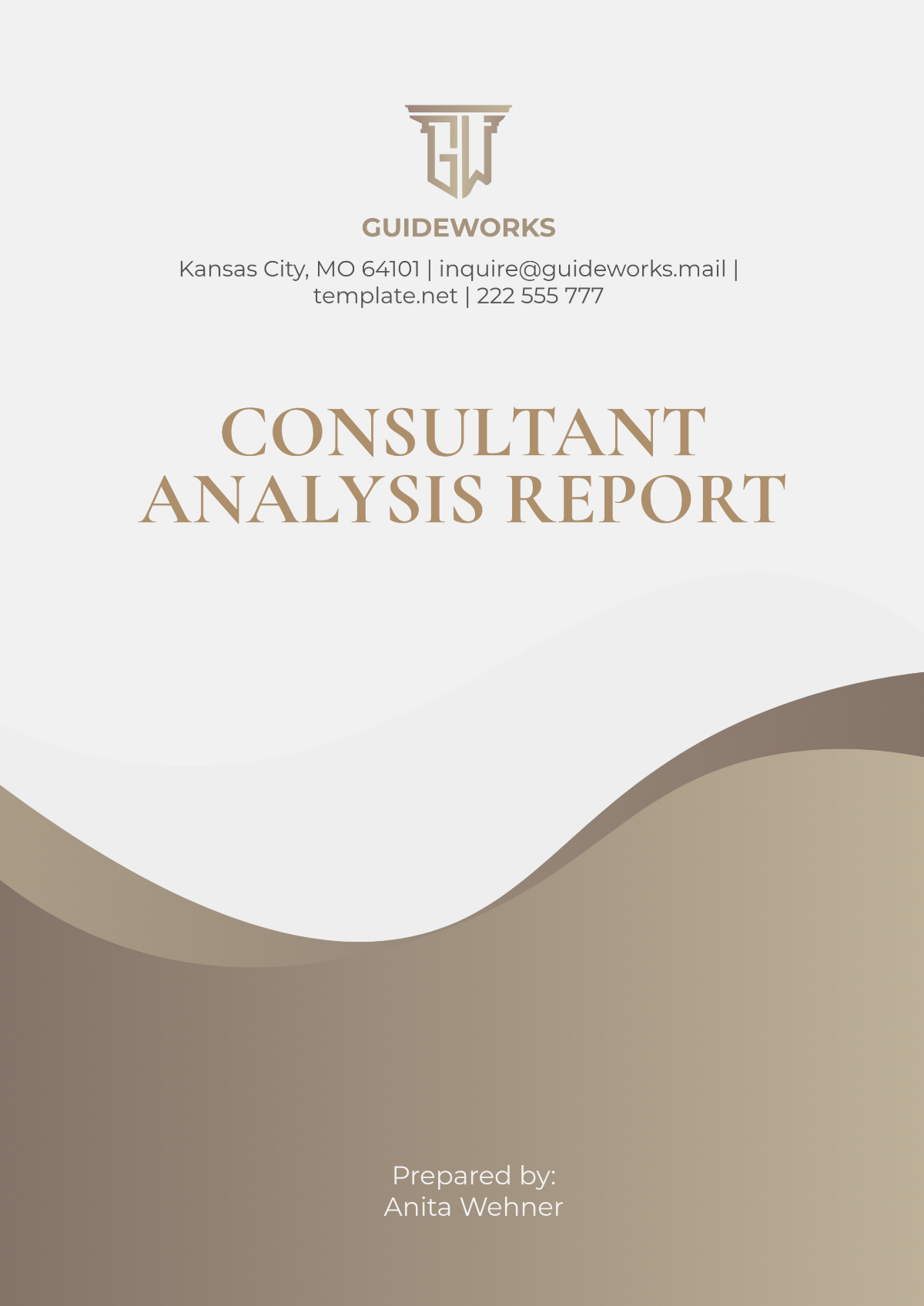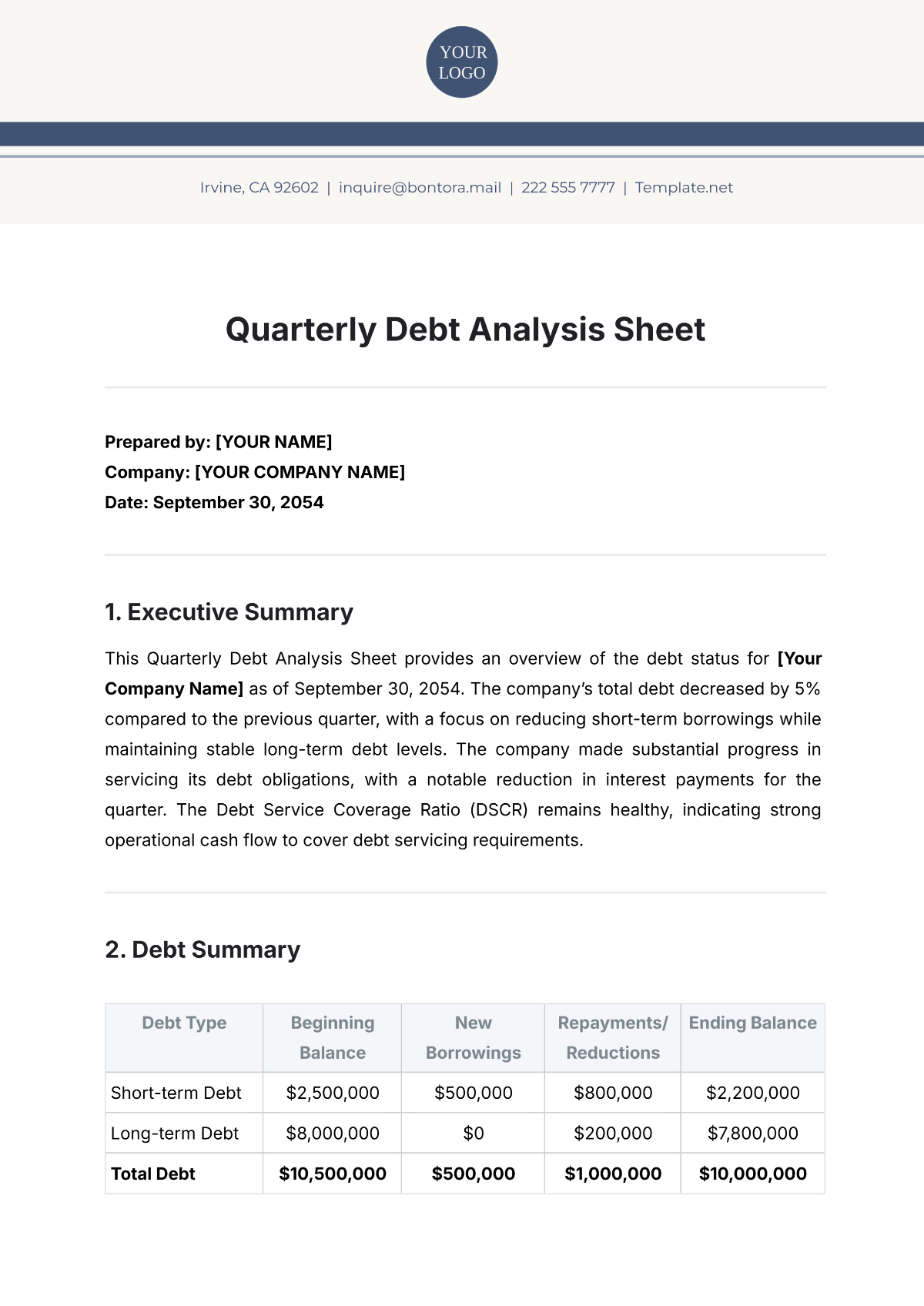Law Firm Case Analysis Procedure
I. Introduction
A. Purpose of the Procedure
The Law Firm Case Analysis Procedure serves as a comprehensive guide for attorneys and staff members at [Your Company Name] to ensure consistent, efficient, and effective handling of legal cases. By following this procedure, we aim to provide high-quality legal representation that meets the needs and expectations of our clients while upholding the firm's standards of professionalism and ethical conduct.
B. Scope and Applicability
This procedure applies to all attorneys, paralegals, and staff members involved in handling legal cases at [Your Company Name], regardless of practice area or level of experience. It encompasses all stages of the case analysis process, from initial client intake to case resolution, and is designed to be adaptable to the unique requirements of each individual case.
C. Definitions and Terminology
In this procedure, "client intake" refers to the process of gathering initial information from potential clients to assess the viability of representing them. "Legal research" involves the systematic investigation of legal principles, statutes, regulations, case law, and other relevant sources of law. The "SWOT Analysis" is an assessment tool used to identify Strengths, Weaknesses, Opportunities, and Threats associated with a legal case, helping to inform strategic decision-making and risk management.
II. Initial Case Evaluation
A. Client Intake and Assessment
Upon receiving an inquiry or referral, the intake team conducts an initial assessment to determine the nature of the legal issue, potential conflicts of interest, and the client's needs and objectives. This involves gathering basic information about the client, the nature of the legal matter, and any relevant background information that may impact the representation.
B. Conflict Check
The conflicts check process ensures that there are no conflicts of interest that would prevent the firm from representing the client effectively. This involves searching the firm's database of current and former clients, consulting with attorneys and staff members, and assessing any potential conflicts that may arise from prior or ongoing representations.
C. Initial Client Meeting
Attorneys meet with the client to discuss the details of the case, gather relevant information, and provide an overview of the firm's services and fee structure. This initial meeting is an opportunity to establish rapport with the client, gain a deeper understanding of their objectives and concerns, and begin laying the groundwork for a successful attorney-client relationship.
D. Establishing Client Objectives and Expectations
During the initial meeting, attorneys work with the client to define clear objectives and expectations for the representation, taking into account the client's legal rights, desired outcomes, and constraints. This involves discussing potential strategies, assessing the likelihood of success, and managing the client's expectations regarding the legal process and timeline.
III. Legal Research and Analysis
A. Identifying Applicable Laws and Regulations
Attorneys conduct thorough legal research to identify and analyze the relevant statutes, regulations, and case law governing the client's legal issue. This involves using online legal databases, library resources, and other sources to gather comprehensive information about the legal framework applicable to the case.
B. Reviewing Relevant Case Law and Precedents
The legal team reviews relevant case law and legal precedents to understand how courts have interpreted similar legal issues in the past and to identify potential arguments and strategies. This involves analyzing court decisions, appellate rulings, and legal commentary to identify persuasive authority and develop effective legal arguments.
C. Assessing Legal Issues and Potential Claims
Based on the legal research, attorneys assess the strengths and weaknesses of the client's case, identify potential legal issues and claims, and develop preliminary legal strategies. This involves analyzing the facts of the case in light of applicable legal principles, identifying potential causes of action or defenses, and evaluating the merits of each claim.
D. Evaluating Jurisdictional Considerations
Attorneys consider jurisdictional factors such as venue, choice of law, and applicable court rules to determine the most strategic approach for pursuing the client's case. This involves assessing the jurisdictional requirements for filing a lawsuit, determining the appropriate forum for litigation, and evaluating the potential impact of jurisdictional issues on the outcome of the case.
IV. Case Assessment and Strategy Development
A. Identifying Strengths, Weaknesses, Opportunities, and Threats (SWOT Analysis)
Attorneys conduct a SWOT analysis to identify the internal and external factors that may impact the success of the case, including legal, factual, procedural, and strategic considerations. This involves assessing the strengths of the client's legal position, such as strong evidence or favorable legal precedent, as well as potential weaknesses, such as gaps in evidence or legal challenges. Additionally, attorneys identify opportunities for achieving favorable outcomes, such as settlement negotiations or alternative dispute resolution, while also considering potential threats, such as adverse rulings or unfavorable jury verdicts.
B. Formulating Legal Strategies and Tactics
Based on the SWOT analysis, attorneys develop comprehensive legal strategies and tactics tailored to the unique circumstances of the case, with a focus on achieving the client's objectives efficiently and effectively. This involves identifying key legal theories, evidence, and arguments to support the client's position, as well as developing contingency plans to address potential challenges and uncertainties. Attorneys also consider the potential costs, risks, and benefits associated with each strategy to ensure that the client's interests are effectively represented.
C. Setting Realistic Goals and Objectives
Attorneys work with the client to establish realistic goals and objectives for the representation, taking into account the legal merits of the case, potential outcomes, and the client's preferences and priorities. This involves discussing the range of possible outcomes, from favorable settlements to contested trials, and helping the client understand the potential risks and rewards associated with each option. By setting clear and achievable goals, attorneys can align their efforts with the client's expectations and maximize the likelihood of a successful outcome.
D. Anticipating Potential Risks and Mitigation Strategies
Attorneys identify potential risks and challenges that may arise during the course of the case and develop proactive mitigation strategies to minimize exposure and maximize the likelihood of success. This involves assessing the legal and factual uncertainties associated with the case, as well as external factors such as opposing counsel's tactics or judicial preferences. Attorneys work closely with the client to develop contingency plans and alternative approaches to address potential obstacles and ensure that the client's interests are protected throughout the legal process.
V. Document Review and Preparation
A. Gathering and Organizing Relevant Documents and Evidence
Attorneys and support staff systematically collect and organize all relevant documents, evidence, and information pertinent to the case. This may include contracts, correspondence, pleadings, discovery materials, witness statements, expert reports, and any other documents essential to the legal analysis and presentation of the case. The documents are securely stored and indexed to ensure easy access and retrieval throughout the duration of the case.
B. Drafting Legal Documents
Based on the gathered information, attorneys draft a variety of legal documents necessary for advancing the client's interests in the case. This may include complaints, answers, motions, memoranda, briefs, discovery requests, and responses, among others. Each document is meticulously crafted to accurately reflect the client's position, adhere to applicable legal standards, and effectively communicate legal arguments to the relevant parties, including opposing counsel, the court, and any other stakeholders.
C. Reviewing Contracts, Agreements, and Other Legal Instruments
Attorneys thoroughly review any contracts, agreements, or other legal instruments relevant to the case to identify potential rights, obligations, and liabilities. This involves analyzing the terms and conditions of the documents, assessing their enforceability and interpretation under relevant law, and determining their potential impact on the client's legal position. Attorneys may also negotiate and draft amendments or modifications to existing agreements to better align with the client's objectives and legal strategy.
D. Maintaining Document Integrity and Confidentiality
Throughout the document review and preparation process, strict protocols are followed to ensure the integrity and confidentiality of all client-related documents and information. This includes implementing robust data security measures, restricting access to sensitive materials on a need-to-know basis, and adhering to client confidentiality obligations under applicable ethical rules and regulations. Attorneys and staff members receive ongoing training and guidance on best practices for handling confidential information and safeguarding client privacy.
VI. Client Communication and Reporting
A. Establishing Communication Channels and Frequency
Attorneys establish clear channels of communication with the client and determine the frequency and mode of communication that best suits the client's preferences and needs. This may include in-person meetings, phone calls, emails, video conferences, or other means of communication as appropriate. Attorneys ensure that clients are informed of significant developments in their case in a timely manner and are accessible to address any questions or concerns that may arise.
B. Providing Regular Updates and Status Reports
Attorneys provide regular updates and status reports to the client to keep them informed of the progress of their case and any developments that may impact their legal rights or options. This includes summarizing key events, milestones, and decisions made during the course of the representation, as well as outlining future steps and anticipated timelines. Status reports are tailored to the client's level of understanding and familiarity with legal proceedings and are presented in a clear and concise manner.
C. Addressing Client Inquiries and Concerns
Attorneys promptly respond to client inquiries and concerns in a professional and courteous manner, providing accurate and comprehensive explanations of legal issues, procedures, and strategies. This may involve clarifying complex legal concepts, discussing potential outcomes and implications, and offering practical advice and guidance to help the client make informed decisions. Attorneys strive to maintain open lines of communication with clients and foster a collaborative relationship built on trust, transparency, and mutual respect.
D. Obtaining Client Instructions and Consent
Attorneys seek and obtain the client's instructions and consent on key decisions and actions taken in the course of the representation, ensuring that the client remains actively engaged and involved in the legal process. This includes seeking authorization for significant legal filings, settlement negotiations, and other strategic decisions that may impact the outcome of the case. Attorneys keep detailed records of client instructions and consent to document the client's informed participation in their legal matter and mitigate the risk of disputes or misunderstandings later on.
VII. Case Management and Coordination
A. Assigning Responsibilities and Tasks
The case manager assigns specific responsibilities and tasks to attorneys, paralegals, and support staff based on their expertise, availability, and workload capacity. This involves delegating legal research, document drafting, client communication, and other case-related activities to ensure efficient allocation of resources and timely completion of deliverables.
B. Monitoring Case Progress and Deadlines
The case manager closely monitors the progress of the case and tracks key milestones, deadlines, and court appearances to ensure that the case stays on schedule and meets client expectations. This involves maintaining detailed calendars, case management systems, and task lists to track upcoming deadlines and critical dates, as well as proactively identifying and addressing any potential delays or obstacles that may arise.
C. Coordinating with Internal and External Stakeholders
The case manager facilitates effective communication and collaboration among internal and external stakeholders involved in the case, including attorneys, clients, expert witnesses, opposing counsel, and court personnel. This involves scheduling meetings, conference calls, and depositions, as well as coordinating document exchange, information sharing, and other collaborative efforts to advance the client's interests and achieve case objectives.
D. Utilizing Case Management Software and Tools
The case manager leverages technology and software tools to streamline case management processes, improve productivity, and enhance communication and collaboration among team members. This may include using case management software, document management systems, project management tools, and communication platforms to facilitate efficient workflow management, document sharing, and real-time communication.
VIII. Negotiation and Settlement
A. Conducting Settlement Discussions and Negotiations
Attorneys engage in settlement discussions and negotiations with opposing parties or their representatives to explore opportunities for resolving the case outside of litigation. This involves assessing the strengths and weaknesses of the client's position, evaluating settlement offers and counteroffers, and advocating for the client's interests while seeking to reach a fair and favorable resolution.
B. Evaluating Settlement Offers and Counteroffers
Attorneys carefully evaluate settlement offers and counteroffers in light of the client's objectives, legal rights, and the potential risks and rewards of continued litigation. This involves analyzing the terms and conditions of proposed settlement agreements, assessing the likelihood of success at trial, and advising the client on the potential benefits and drawbacks of accepting or rejecting the offer.
C. Advising Clients on Settlement Options and Implications
Attorneys provide strategic advice and counsel to clients regarding their settlement options and the potential implications of accepting or rejecting a settlement offer. This includes discussing the potential costs, benefits, and risks associated with settlement, as well as exploring alternative dispute resolution mechanisms such as mediation or arbitration. Attorneys work collaboratively with clients to evaluate their options and make informed decisions that align with their goals and priorities.
D. Drafting and Finalizing Settlement Agreements
Upon reaching a settlement agreement, attorneys draft and finalize the terms of the settlement agreement in accordance with the parties' negotiated terms and applicable legal requirements. This involves preparing a written agreement that accurately reflects the terms of the settlement, obtaining necessary signatures and approvals from all parties, and ensuring compliance with any procedural or substantive requirements imposed by the court or relevant authorities. Attorneys strive to negotiate fair and equitable settlements that protect the client's interests and provide closure to the legal matter.
IX. Litigation and Trial Preparation
A. Initiating Legal Proceedings
In cases where settlement negotiations are unsuccessful or litigation is deemed necessary to achieve the client's objectives, attorneys initiate legal proceedings by filing the appropriate pleadings and motions with the court. This involves preparing and filing a complaint, answer, or other initiating documents in compliance with court rules and procedures, and serving copies on the opposing parties in accordance with applicable legal requirements.
B. Preparing Witnesses and Exhibits
Attorneys prepare witnesses and exhibits for trial by conducting witness interviews, drafting witness statements, and organizing documentary evidence to support the client's case. This may involve identifying and subpoenaing relevant witnesses, preparing them for testimony, and creating demonstrative exhibits, visual aids, and other trial materials to present evidence effectively to the trier of fact.
C. Conducting Depositions and Discovery
Attorneys conduct depositions and engage in discovery to gather additional evidence, depose witnesses, and obtain information relevant to the case. This involves preparing deposition outlines, questioning witnesses under oath, and responding to discovery requests from opposing parties, while also complying with discovery rules and court orders to ensure fair and efficient exchange of information.
D. Trial Strategy Development and Rehearsal
Attorneys develop a comprehensive trial strategy based on the evidence, legal arguments, and procedural considerations relevant to the case. This involves crafting opening statements, direct and cross-examination questions, and closing arguments that effectively convey the client's position and persuade the trier of fact. Attorneys conduct mock trials, moot courts, or other trial simulations to rehearse trial presentations, test arguments, and refine trial strategy in preparation for the courtroom.
X. Case Resolution and Follow-Up
A. Implementing Court Orders and Judgments
Upon resolution of the case through settlement, judgment, or other means, attorneys ensure timely implementation of court orders and judgments in accordance with applicable legal requirements. This involves taking necessary steps to enforce court rulings, comply with settlement terms, and obtain any relief or remedies awarded by the court to the client.
B. Post-Case Review and Analysis
After the conclusion of the case, attorneys conduct a post-case review and analysis to evaluate the outcome, identify lessons learned, and assess opportunities for improvement. This involves reviewing case files, analyzing case outcomes, and documenting key insights, challenges, and successes for future reference and continuous improvement.
C. Assessing Client Satisfaction and Feedback
Attorneys seek feedback from clients regarding their satisfaction with the legal representation and overall experience with the firm. This may involve conducting client surveys, holding exit interviews, or soliciting informal feedback to gauge client satisfaction, identify areas for improvement, and strengthen client relationships.
D. Documenting Lessons Learned for Future Cases
Attorneys document lessons learned from the case, including successful strategies, challenges encountered, and best practices observed, to inform future case analysis and representation. This involves updating internal resources, such as case management protocols, training materials, and practice guides, to incorporate new insights and improve the firm's ability to effectively handle similar cases in the future.
XI. Compliance and Quality Assurance
A. Ensuring Adherence to Ethical and Professional Standards
Attorneys and staff members adhere to the highest ethical and professional standards in the practice of law, including compliance with applicable rules of professional conduct, confidentiality obligations, and conflicts of interest rules. This involves conducting themselves with integrity, honesty, and diligence in all aspects of their work, and upholding the reputation and credibility of the firm within the legal community and among clients.
B. Reviewing Compliance with Firm Policies and Procedures
The firm regularly reviews and monitors compliance with internal policies, procedures, and quality standards to ensure consistency, accuracy, and effectiveness in case analysis and management. This involves conducting periodic audits, assessments, and reviews of case files, documentation, and practices to identify areas for improvement and address any deviations from established protocols.
C. Conducting Quality Assurance Checks and Audits
The firm implements quality assurance measures and controls to monitor the quality and reliability of legal services provided to clients. This may include conducting peer reviews, case file reviews, and client satisfaction surveys to assess the quality of legal work, identify areas of strength and areas for improvement, and implement corrective actions as needed to enhance service delivery and client satisfaction.
D. Addressing Any Identified Deficiencies or Issues
In the event of any identified deficiencies, errors, or issues in case analysis or management, the firm takes prompt and appropriate corrective action to address the root cause and prevent recurrence. This may involve providing additional training, guidance, or resources to staff members, implementing process improvements or workflow adjustments, and communicating lessons learned to mitigate future risks and improve overall performance.
XII. Conclusion
A. Summary of Key Points
The Law Firm Case Analysis Procedure provides a comprehensive framework for analyzing, managing, and resolving legal cases within [Your Company Name], ensuring consistent, efficient, and effective representation for our clients. By following this procedure, attorneys and staff members can navigate the complexities of the legal process with confidence, professionalism, and integrity, while upholding the firm's commitment to excellence and client satisfaction.
B. Continuous Improvement and Adaptation
The firm is committed to continuous improvement and adaptation in response to changing legal and business environments, client needs and expectations, and emerging best practices in the legal profession. This involves soliciting feedback, fostering a culture of innovation and learning, and embracing opportunities for growth and development to enhance the firm's capabilities and value proposition.
C. Acknowledgment of Contributors
The Law Firm Case Analysis Procedure is the result of collaborative effort and input from attorneys, staff members, and other stakeholders within the firm. The firm acknowledges and appreciates the contributions of all individuals involved in the development and implementation of this procedure, whose expertise, insights, and dedication have enriched its content and effectiveness.
D. Document Version Control and Distribution
This document serves as the official version of the Law Firm Case Analysis Procedure and is maintained and updated as needed by [Department Name]. Any revisions, amendments, or updates to the procedure are documented, approved, and communicated to relevant stakeholders in accordance with firm policies and procedures.

















































